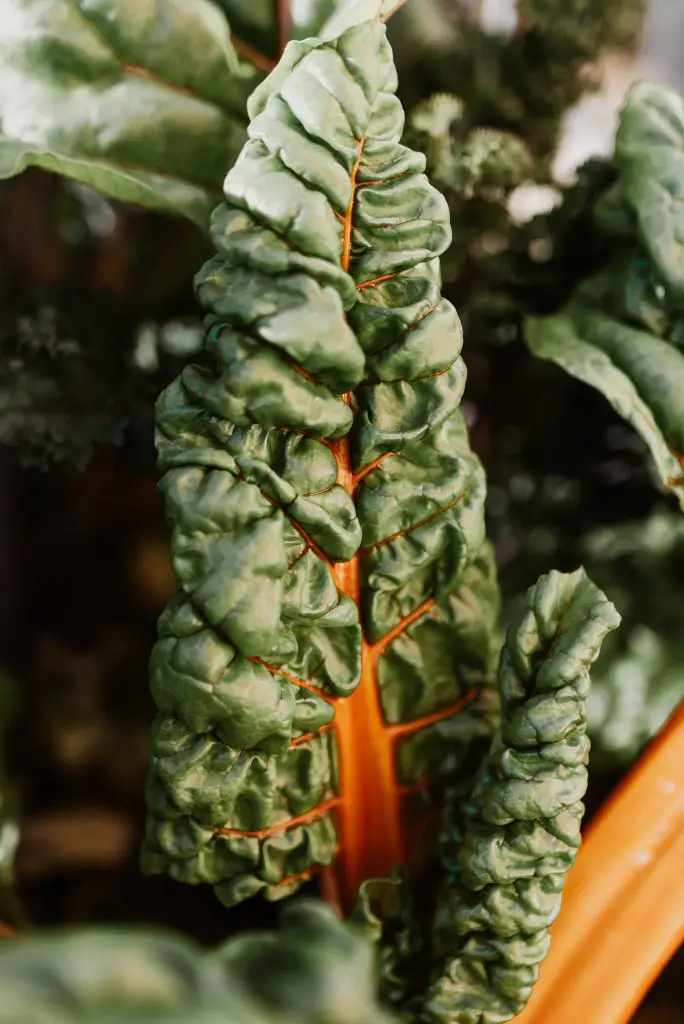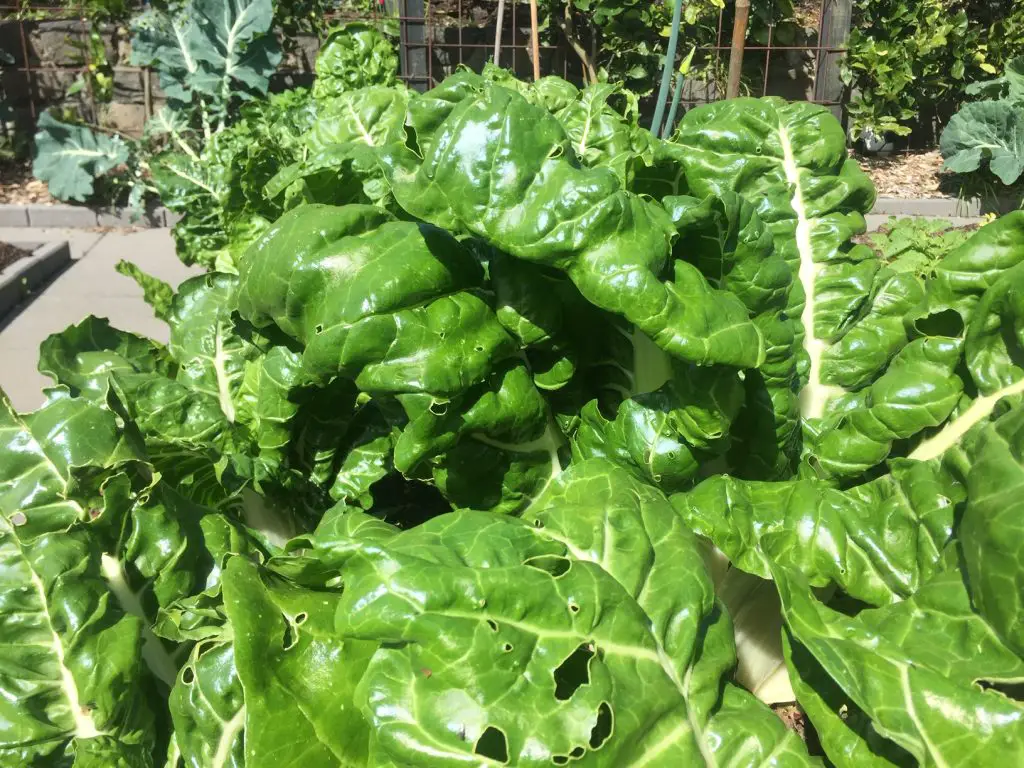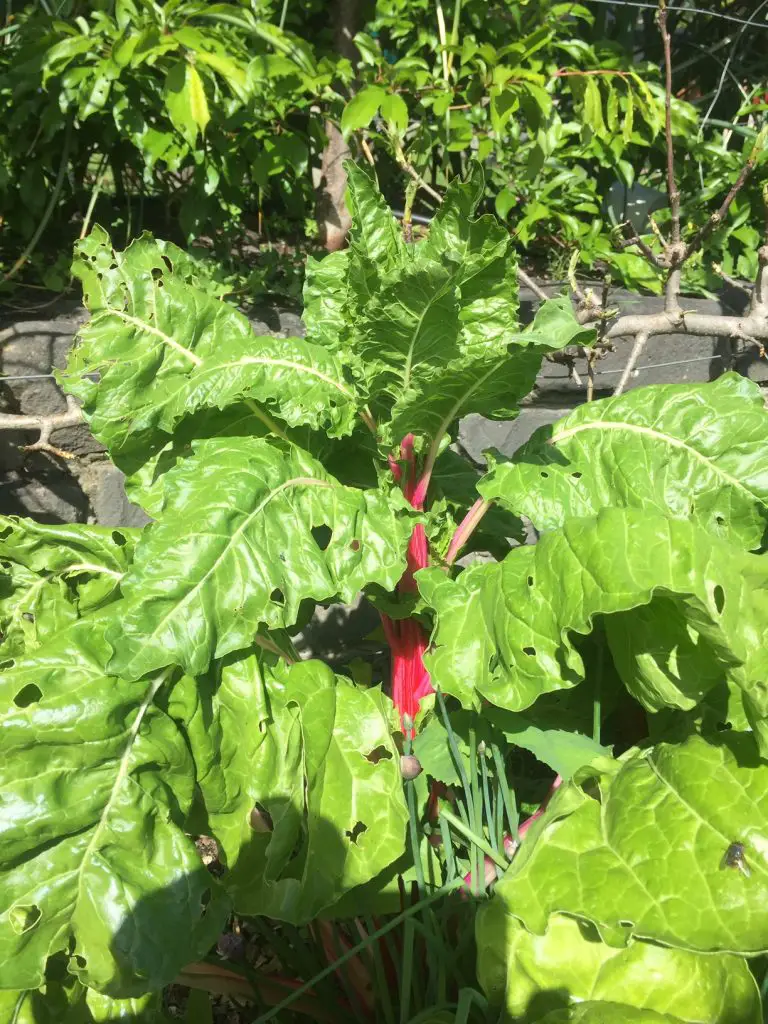Does Swiss Chard (Silverbeet) Need Full Sun? Silverbeet, sometimes referred to as Chard, is one of the most prolific leafy green vegetables. It can produce for up to 9 months, if planted at the right time of the year, and is a must for any productive garden.
It is a widely used ingredient around the world, due to its availability, nutritional value and flavour. Most varieties have a green leaf blade with the stalk available in a range of colours including White, Yellow and Red. It is a highly recommended vegetable, because it is easy to grow and produces large quantities of food, over an extended period of time.
Silverbeet will tolerate a wide range of conditions from Full Sun to Full Shade. However, in full shade, the Silverbeet will produce leaves more slowly, due to a reduction in the rate of Photosynthesis.
How To Grow Silverbeet
Silverbeet, sometimes known as Chard or Swiss Chard and to a lesser extent as Perpetual Spinach, Beet Spinach, Seakale Beet, or Leaf Beet, is a member of the Beet family, and is closely related to Beetroot. It originated around the coast of the Mediterranean Sea and was known to be enjoyed by Ancient Greeks, as it is mentioned frequently in the literature under several different names.

Silverbeet is an extremely hardy plant, that can tolerate temperatures as low as -12°C (10°F). Due to that resistance to cold, it can be grown in a wide variety of climates and overwintered in US hardiness Zones, greater than 6. However, some protection in Winter in colder climates is beneficial for this it is best to use row covers. To read more about this, go to https://planyourpatch.com/what-is-the-lowest-temperature-vegetable-plants-can-tolerate/.
If you do not have a row cover the one we would recommend is Growsun Garden Tunnel Plant Cover because it is relatively tall and low in cost, it can be found on Amazon by clicking the link.
Plants are best established in early Spring or Summer. In cooler climates starting seedlings earlier is best, however, for those in milder climates, any time in that period is fine, as the climate will allow the plants to on go producing harvests through Autumn and Winter.
If overwintered, the Silverbeet will begin to set seeds in mid to late Spring but will allow a few harvests before finishing. This provides time for the following year’s plants to become established, providing almost year-round supply.
Plants can be established by direct sowing into the soil, however, planting in modular trays is recommended. The reason for this is that Silverbeet is prone to being attacked by slugs and snails, sowing them in trays affords them greater protection when they are most vulnerable. The lowest cost place to buy seeds that I have been able to find is at Seeds Now, which offer 5 or 6 different varieties of heirloom seeds.

Seedlings will typically take between 4 to 6 weeks to reach a size, large enough to be planted out into the garden. The seedlings should be planted out at a spacing of 40cms (16 inches). They prefer rich soil with plenty of compost, with a slightly acidic pH, to learn more about this, go to https://planyourpatch.com/why-is-ph-important-in-soil/.
Silverbeet will typically take another 4 to 6 weeks to become established before you can begin to harvest. The harvests will initially be modest, however as the plant becomes more established, the harvest will become sizable.
Many leaves can be harvested at once when the plant is mature, without causing a detrimental impact upon the plant. This is because the roots contain a store of the Carbohydrates necessary for additional leaf growth. Due to the size of the roots of older plants, it is possible to remove all the leaves without killing the plant.
Storing Silverbeet
Given the prolific nature of Silverbeet and its year-round availability, it is not often that there is a need to store Silverbeet. However, for those that need to store the vegetable, it can be stored, short term, in the crisper draw of the fridge for a few days.

For those that live in climates where the Silverbeet cannot be grown year round, it may be frozen. To freeze Silverbeet successfully, it needs to be blanched prior to freezing. The blanching process ensures that the vegetable retains its colour, by stopping enzyme activity within the leaves. If you are unfamiliar with how to blanch, the steps are provided below;
- Step 1: Wash The Silverbeet And Remove The Stork. Cut the leaves into smaller pieces, as this will allow the leaves to fit more easily into the pot.
- Step 2: Blanch The Silverbeet by bringing a large pot of water to boil. Fill a large bowl with ice water, just prior to starting the blanching process. Once the pot is boiling, add your Silverbeet into the water. Cook for 2 minutes, then remove from the pot and immediately plunge the Silverbeet into the ice water to cool, for around the same amount of time as the blanching, and then drain thoroughly.
- Step 3: Prepare The Silverbeet For Freezing, Then Freeze. Pack all of your blanched Silverbeet into plastic bags, or suitable containers. Ensure each bag or container is labelled with dates.
Relevant Article
Is Swiss Chard And Rhubarb The Same Thing? How Do You Tell The Difference?
How Long Does It Take Cabbage To Grow? (A Complete Answer)
What types of cabbage are there?
